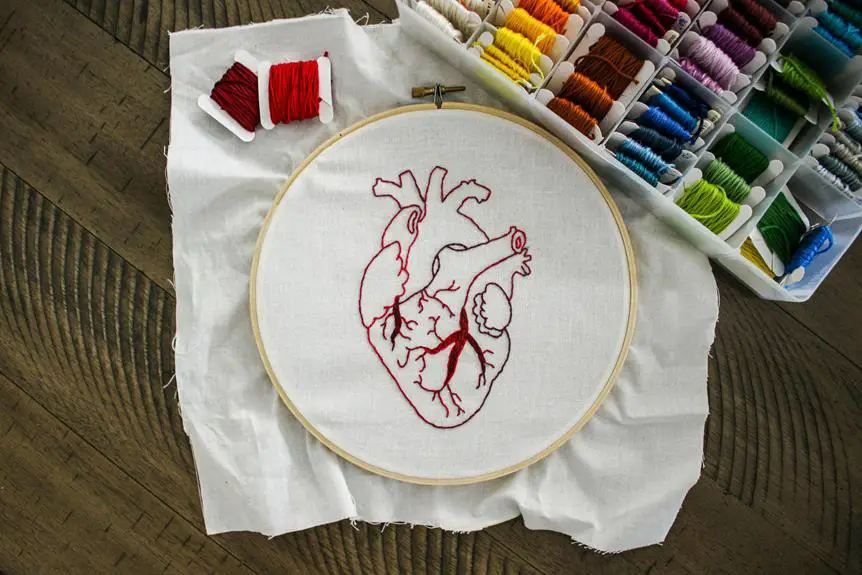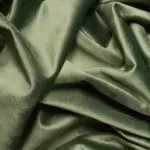When you think about seersucker, you probably picture its distinctive texture and lightweight feel, but have you ever wondered how it's actually made? The process involves a careful selection of materials and a unique weaving technique that creates its signature puckered effect. From the way the threads are dyed to the final finishing touches, each step plays a crucial role in achieving the fabric's renowned durability and style. But what are these intricate steps, and how do they contribute to the fabric's appeal? Let's explore the fascinating journey of seersucker.
Table of Contents
History of Seersucker
Seersucker's origins date back to the early 18th century in India, where its unique crinkled texture was prized for its ability to keep wearers cool in hot climates. The fabric's name comes from the Persian words “shir o shakar,” meaning “milk and sugar,” referring to its alternating smooth and textured stripes, much like the two substances.
As British colonists encountered this fabric, they recognized its practicality and comfort. By the late 19th century, seersucker made its way to the United States, where it gained popularity in the Southern states, particularly among men's summer suits. You might find it hard to believe that this fabric, with roots in India, became a staple in American fashion, but its lightweight nature made it ideal for warm weather.
Over time, seersucker evolved, incorporating various colors and patterns, ultimately becoming a symbol of casual elegance. It's fascinating how seersucker has maintained its relevance through the years, adapting to fashion trends while staying true to its origins.
Materials Used in Seersucker
The unique texture and comfort of seersucker come from the specific materials used to create it, primarily cotton, though blends with polyester or other fibers are also common. Cotton's natural breathability and softness make it an ideal choice for warm weather, ensuring you stay cool and comfortable.
When you wear seersucker, you'll appreciate its lightweight feel, which is enhanced by its crinkled surface. This texture not only adds visual interest but also helps with airflow, keeping you fresh throughout the day. If you opt for cotton-polyester blends, you'll benefit from added durability and wrinkle resistance, making your seersucker garments easier to care for.
You might also find seersucker made with other fibers like linen or rayon, which can further enhance its unique qualities. These materials often lend their own textures and drapes, offering you a variety of styles to choose from.
Whether you prefer pure cotton or a blended fabric, the materials you select play a crucial role in the overall look and feel of your seersucker clothing. So, when you're shopping, keep these material options in mind to find the perfect fit for your personal style.
The Weaving Process
To create seersucker, manufacturers use a specific weaving technique that combines alternating tight and loose threads, resulting in its distinctive puckered texture. This process begins with selecting high-quality cotton or a cotton-blend yarn. The yarn is then dyed, often in vibrant colors or patterns, to enhance the fabric's appeal.
Next, the weaving takes place on a loom. It's essential to adjust the tension of the threads carefully. Tight threads are woven closely together, while loose threads are allowed to have more space. This intentional imbalance in tension creates the characteristic ridges and valleys of seersucker fabric.
As the loom operates, the weaver checks to ensure that the pattern is consistent and that the fabric flows smoothly. This meticulous attention to detail is crucial for maintaining the fabric's overall quality.
Once the weaving is complete, the fabric is cut and finished. Manufacturers may choose to pre-shrink the fabric to prevent future shrinkage after washing. The result is a lightweight, breathable fabric that's perfect for warm weather clothing, embodying both style and comfort.
Creating the Puckered Effect
Creating the puckered effect in seersucker involves manipulating the tension of the threads during the weaving process to produce those signature raised and recessed areas. This technique not only gives seersucker its unique texture but also enhances its breathable qualities, making it a popular choice for warm-weather clothing.
To achieve this effect, you'll follow a few key steps:
- Thread Selection: Use a combination of cotton and synthetic fibers to ensure durability and flexibility. The choice of materials plays a crucial role in how the fabric behaves under tension.
- Weaving Technique: Employ a special weaving method, often referred to as “slack-tension weaving,” which allows certain threads to be pulled tighter than others. This creates the characteristic puckering by alternating between tight and loose threads.
- Finishing Process: After weaving, the fabric is often treated to enhance its texture and reduce shrinkage. This may include steam treatments that further emphasize the puckered look.
Dyeing Techniques
When it comes to dyeing seersucker, you've got a few options to consider.
You can explore natural dye processes, synthetic dye methods, and even tie-dye techniques to create unique patterns and colors.
Each method offers its own benefits, allowing you to customize your fabric to suit your style.
Natural Dye Processes
Natural dye processes involve extracting color from plants, minerals, or insects, allowing you to achieve unique shades and textures in your seersucker fabric. By using natural dyes, you're not just coloring fabric; you're embracing a sustainable method that offers a distinct character to your creations.
Here are three common sources of natural dyes you can explore:
- Plants: Many plants yield vibrant colors. For instance, marigold flowers produce a bright yellow, while indigo leaves can create deep blues. Experimenting with different parts of the plant, like roots and leaves, can lead to unexpected hues.
- Minerals: Certain minerals can also provide beautiful colors. For example, ochre gives you warm earthy tones, while iron can create grays and blacks. These pigments often require a more complex extraction process but yield stunning results.
- Insects: Insect-based dyes, like cochineal, produce rich reds. While sourcing these dyes may involve ethical considerations, they can offer vibrant colors that are hard to replicate with plants.
Synthetic Dye Methods
Synthetic dye methods offer a wide range of vibrant colors and consistent results, making them a popular choice for seersucker production. These dyes are generally more affordable and easier to apply than natural alternatives. You'll find that synthetic dyes can create everything from deep blues to bright yellows, giving designers plenty of options to choose from.
When it comes to application, you can use various techniques such as immersion, spray, or roller dyeing. Each method has its own advantages, allowing you to decide which one works best for your desired outcome.
Here's a quick comparison of some common synthetic dye methods:
| Dye Method | Key Features |
|---|---|
| Immersion Dyeing | Full fabric saturation, vibrant colors |
| Spray Dyeing | Controlled application, unique patterns |
| Roller Dyeing | Efficient for large quantities, even coverage |
Tie-Dye Techniques
Tie-dye techniques bring a playful and artistic flair to seersucker, transforming ordinary fabric into vibrant, one-of-a-kind creations. By using various tying and folding methods, you can achieve stunning patterns that elevate your seersucker garments.
Here are three popular tie-dye techniques you can try:
- Crumple Tie-Dye: This technique involves crumpling the fabric into a tight ball and securing it with rubber bands. As you apply dye, the crumpled areas will create unique, random patterns that give your seersucker a dynamic look.
- Spiral Tie-Dye: To create a spiral effect, you'll pinch the fabric's center and twist it around, forming a spiral shape. Secure it with rubber bands and apply different dye colors to each section for a mesmerizing swirl of hues.
- Bullseye Tie-Dye: For this classic effect, pinch the fabric at a point and pull it upward, securing it with bands. As you dye each section, the colors will radiate outward, creating a captivating bullseye pattern.
Experimenting with these techniques not only personalizes your seersucker but also lets you express your creativity in fabric design.
Finishing Touches
After the fabric is woven, it undergoes several finishing touches to enhance its texture and appearance. These processes ensure that your seersucker fabric not only looks great but also feels comfortable to wear.
First, the fabric is typically pre-shrunk. This step helps to prevent any surprises in size after you've washed it. You don't want your favorite shirt shrinking unexpectedly!
Next, chemical treatments may be applied to improve the fabric's durability and resistance to wrinkles. These treatments help maintain that signature crinkled look seersucker is known for, while also making it easier to care for. You'll appreciate this when you're in a rush but still want to look polished.
Care and Maintenance
To keep your seersucker looking its best, it's important to follow some simple care and maintenance guidelines. Seersucker's unique texture and lightweight fabric require special attention to maintain their charm and longevity.
- Wash Carefully: Always wash your seersucker items in cold water on a gentle cycle. Avoid bleach, as it can damage the fabric's fibers and colors. If you're dealing with stubborn stains, treat them gently before washing.
- Dry Properly: Air drying is your best option. Hang your seersucker pieces on a line or lay them flat to dry. If you must use a dryer, opt for a low heat setting and remove the items while they're still slightly damp to prevent excessive wrinkling.
- Iron with Caution: If your seersucker needs ironing, do so on a low heat setting. Use a pressing cloth to protect the fabric's texture. However, you may find that it's best enjoyed with its natural wrinkles, which are part of its appeal!
Frequently Asked Questions
What Types of Garments Are Commonly Made From Seersucker Fabric?
You'll find seersucker fabric commonly used in summer garments like shirts, dresses, shorts, and suits. Its lightweight and breathable nature makes it perfect for warm weather, ensuring you stay comfortable and stylish during those hot days.
Where Did the Name "Seersucker" Originate From?
You'll find that the name "seersucker" originates from the Persian words "shir o shakar," meaning "milk and sugar." This reflects the fabric's unique texture, combining smooth and rough surfaces, creating a delightful contrast.
Can Seersucker Be Used for Home Decor Items?
Absolutely, you can use seersucker for home decor items! Its unique texture and lightweight fabric make it perfect for curtains, cushions, and even bed linens, adding a charming touch to any room in your home.
Why Is Seersucker Popular in Warm Climates?
Seersucker's popularity in warm climates comes from its lightweight, breathable fabric that allows air circulation. You'll appreciate how its unique texture keeps you comfortable, while its stylish look adds a touch of flair to your wardrobe.
Are There Any Eco-Friendly Seersucker Options Available?
Yes, there are eco-friendly seersucker options available. Look for fabrics made from organic cotton or recycled materials. These sustainable choices reduce environmental impact while providing the same breathable comfort and style you love in seersucker.
- Width of Velvet Fabric: Standard Bolts & Custom Ordering Information - June 22, 2025
- Buying Velvet Fabric Online: Trusted Sources & Quality Assessment Tips - June 22, 2025
- What Is Devoré Velvet? Burnout Technique, Patterns & Aesthetic - June 22, 2025







